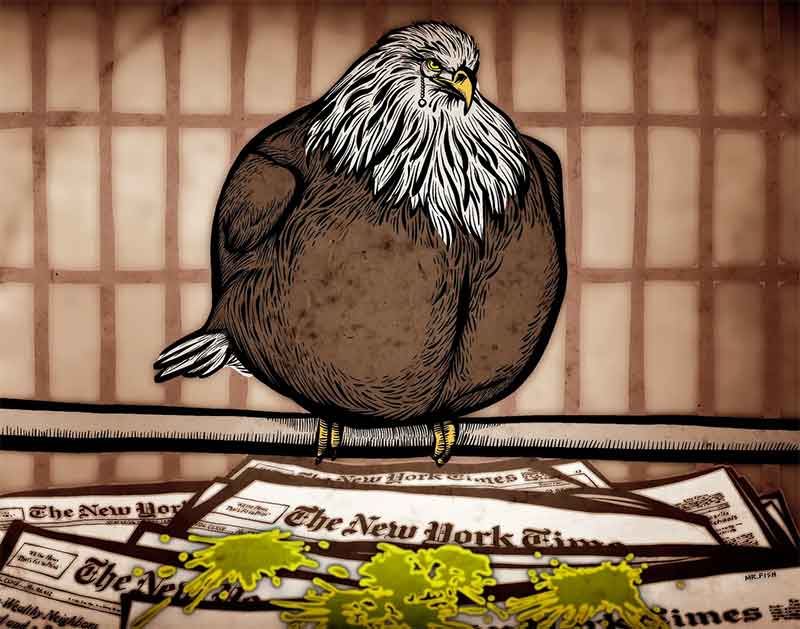
The Adani conglomerate should be best described as a bloated gangster, promising the earth even as it mines it. Like other corporate thugs of such disposition, it will do things within, and if necessary outside, the regulatory framework it encounters. Where necessary, it will libel detractors and bribe critics, speak of a fictional number of as yet non-existent jobs, and claim that it is green in its coaling practices. It will also hire legal firms claiming to be trained attack dogs and hector the national broadcaster to pull unflattering stories from publication and discussion.
As a marauder of the environment, the Indian mining giant has left little to chance. It has politicians friendly to its cause in Australia at both the state and federal level, but it faces an environmental movement that refuses to dissipate. It also has a problem with environmental science, particularly in the area of water management. Conditional approvals have been secured, albeit hurried in the aftermath of May’s federal election, and even here, further testing will have to be done.
Given the inconveniences posed by scientists wedded to methodology and technique, the company did not surprise in freedom of information findings by the environmental group Lock the Gate that it had asked the federal environment department for “a list of each person from CSIRO and Geoscience Australia involved in the review” of the Groundwater Dependent Ecosystem Management Plan (GDEMP) and Groundwater Monitoring and Management Plan (GMMP).
In a bullying note to the Department of Environment and Energy (DOEE) in January 25 this year, Hamish Manzi, head of the company’s environment and sustainability branch officiously gave a five day limit to the request, claiming that it “simply wants to know who is involved in the review to provide it with peace of mind that it is being treated fairly and that the review will not be hijacked by activists with a political, as opposed to scientific, agenda.” Manzi had noted “recent press coverage regarding an anti-coal and/or anti-Adani bias potentially held by experts reviewing other Adani approvals.” For Manzi, the only expert worthy of that name would have to be sympathetic to the mining cause.
The corporate instinct is rarely on all fours with that of the scientific one. The former seeks the accumulation of assets, profits and dividends; the latter tests hypotheses using a falsification system, a process that can only ever have fidelity to itself. The corporate instinct is happy to forget troubling scientific outcomes, and, where necessary, corrupt it for its ends. Where the science does not match, it is obviously the work of ill-motivated activists or those inconvenienced by conscience.
The Union of Concerned Scientists in February 2012, through its Scientific Integrity Program, supplied readers with a list of fields where science, and scientists, have been attacked or compromised. More importantly, it notes how governments become the subject of influence, their decisions ever vulnerable to wobbling. “Corporations attempt to exert influence at every step of the scientific and policy-making processes, often to shape decisions in their favour or avoid regulation and monitoring of their products and by-products at the public’s expense. In so doing, they often attempt to fundamentally alter the decision-making process.”
The methods of corrupting science are not exhaustive, but the UCS report suggests a view tried ones. Research, for instance, is either held up by the company in question or terminated. Scientists are intimidated or coerced through threats to job security, defunding and litigation. Defective methodologies in testing and research are embraced. Scientific articles are ghost written, with corporate sponsorship blurred. Negative results are slyly underreported; positive results are glowingly celebrated. And never forget good old fashioned vilification.
The FOI documents regarding Adani’s conduct show the company as a witchdoctor wooing the federal government into timed releases of information and an obsession with preventing a broader public discussion of findings. A January 9 email from Adani to DOEE demanded that CSIRO/GA reports not be circulated to third parties or the public. The next day, the department obligingly informed the company that it would only share advice with Queensland’s Department of Environment and Science.
The uncovered documents also show a certain degree of cyber stalking at play. On January 15, a staff member of Geoscience Australia wrote to DOEE expressing concern that the company had viewed LinkedIn profiles of employees. Such concerns did little to ruffle the growing accord between the department and the company.
The abdication of government to the corporate sector is one of the more troubling features of this tawdry chapter in Australian non-governance. Corporate giants know they must enlist the support of representatives who they can trust to be of sound mind. History is replete with successful lobbying efforts in the name of corrupted science.
In 2007, ReGen Biologics, a New Jersey company, faced a sceptical Food and Drug Administration (FDA) concerned with Menaflex, a device intended to replace knee cartilage. With the FDA’s rejection came a mobilisation effort. Politicians were sought and cultivated. In December that year, Senators Frank Lautenberg and Robert Menendez, and Rep. Steve Rothman all wrote to FDA Commissioner Andrew von Eschenbach. The Commissioner’s ear had been bended sufficiently to lead to a new review headed by Dr Daniel Schultz, head of the FDA’s medical devices division. Scepticism vanished; the product was approved. In 2010, a shamefaced FDA had to concede that it had erred and duly revoked approval.
Instead of defending practices of departments and professionals engaged in the task of assessing the merits of such ventures, individuals such as the Australian deputy prime minister suggest that Adani might have a point in is heavy-handed enthusiasm to root out contrarians. In Michael McCormack’s view, Adani “were made to jump through more environmental hoops than perhaps any previous project in the nation.” They merely “wanted to determine… that those arguing against their proposals were not just some quasi anti-development groups or individuals.” The thug’s narrative has found a home in the hearts of the anti-scientific representatives that currently rule the Canberra roost. Scientists have been warned.
Dr. Binoy Kampmark was a Commonwealth Scholar at Selwyn College, Cambridge. He lectures at RMIT University, Melbourne. Email: [email protected]









































